How to grow F1 Hybrid Geraniums from seed
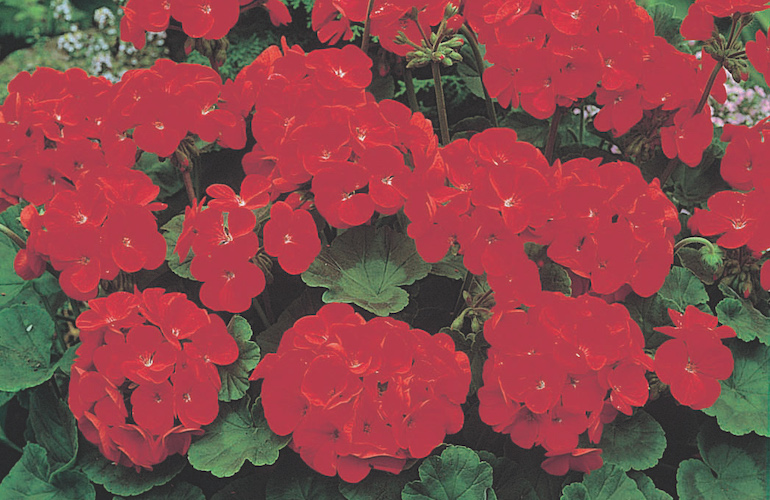
Growing Geraniums from seed helps fill your garden with colour at a lower price
Image: Geranium 'Moulin Rouge' F1 Hybrid from Thompson & Morgan
Geranium and pelargonium plants are a quintessential part of summer bedding displays and a quick way to fill empty pots and borders. But if you prefer to sow your own Geranium F1 Hybrid seeds and get a buzz from filling your garden with value for money colour, our comprehensive guide tells you everything you need to know about growing geraniums from seed.
When should I sow geranium seeds?
Sow your geranium seeds from mid to late December for flowering in late April and early May. Alternatively, an early January sowing should produce flowers in mid to late May. If you want to get a real head start on the following year's growing season, you can sow your seeds in Autumn and simply overwinter the young plants. Watch our video on how to overwinter geraniums if you need a few tips.
Geranium seeds take between 18-20 weeks to mature and produce flowers. This is influenced by the time of year the seeds are sown, as well as light levels and temperature.
How to sow geranium seeds
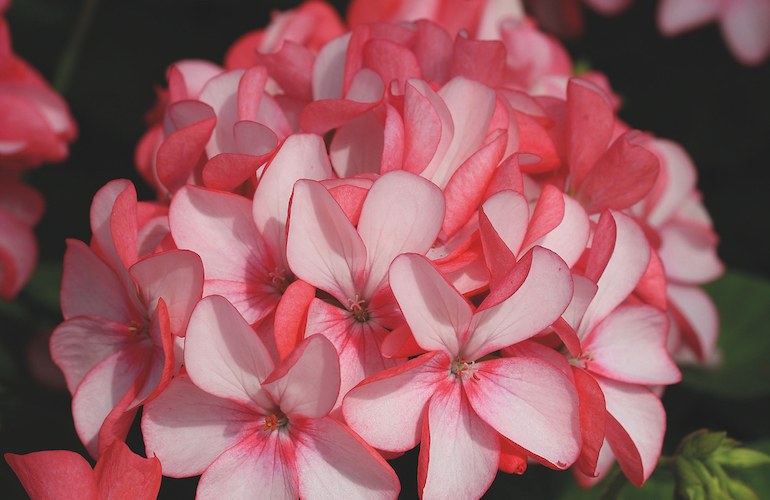
Keep your geranium seeds moist to encourage germination
Image: Thompson & Morgan
Sow your geranium seeds in moist, free-draining seed compost in a seed tray or small pot. Space the seeds out so that each has space to germinate, and cover with a thin layer of compost or vermiculite.
Water gently after sowing with a fine rose or mist spray. Cover the seed container with a sheet of glass or a polythene bag and seal with an elastic band. Turn the glass daily and remove once the seedlings have germinated. Ensure that the compost stays moist, but not wet.
What temperature is best for germinating geranium seeds?
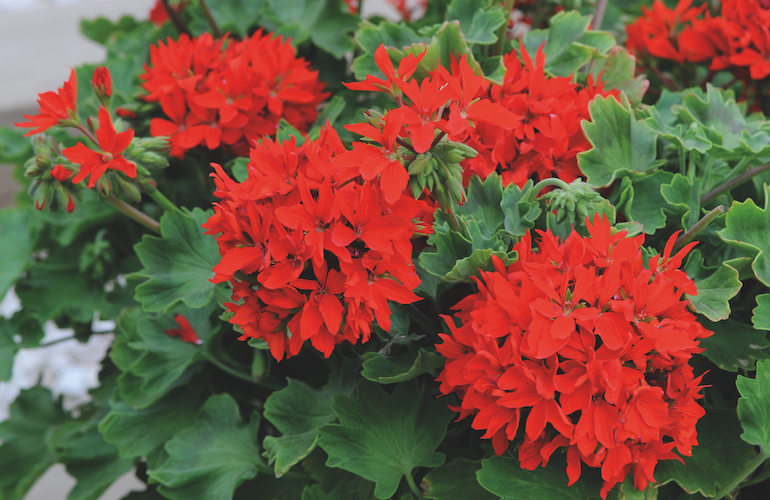
Your geranium seeds need to be kept at the correct temperature to germinate
Image: Geranium 'Quantum Red' from Thompson & Morgan
It’s essential that a steady and warm soil temperature of between 70-75F (21-24C) is maintained to germinate geranium seeds. If you have one, use an electric propagator to guarantee the correct environment. Kept at the correct temperature, your seeds will take between 3 and 21 days to germinate. Don’t give up if it takes a little while.
An important factor in the successful germination of geranium seeds is constant moisture during the early stages. If the seed starts to germinate and the delicate young root comes into contact with dry compost, it will probably not survive.
Once the plants have germinated, the temperature can be reduced somewhat. Air temperature is what causes mature geranium plants to flower.
How to transplant your geranium seedlings
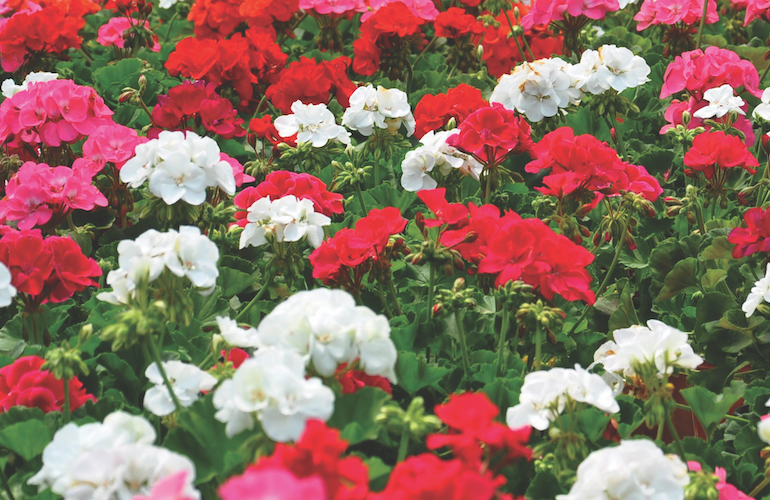
Plant your geraniums in swathes for a carpet of bright colours
Image: Geranium 'Border Supreme' F2 Hybrid from Thompson & Morgan
There are two stages to transplanting your young geranium seedlings:
- Prick out your geranium seedlings into boxes as soon as they’re large enough to handle, which may be as early as 7-10 days after sowing.
- Pot on your geranium seedlings into 3-4in (7.5cm) pots 5-6 weeks after sowing. In each case use a light, well drained potting compost and water them in gently.
How to care for geranium seedlings
After pricking out, maintain an air temperature of 65F (18C) at night and 70F (21C) during the day. Keep at these levels for 1-2 weeks to encourage rooting, and then gradually reduce the temperature down to 55-60F (13-15C) at night, 6-8 weeks after potting.
During the day, the temperature can be allowed to rise to 70-75F (21-24C) - plants will take longer to develop in low temperatures. To get flowers in early July the temperature can be reduced to 65F (18C) after germination (or pricking out if applicable) and two months after sowing reduced again to 45F (7C). It’s impossible to be entirely definite about this timing because varieties vary in their natural rate of maturity, and light levels also play a significant part.
How to care for young geranium plants
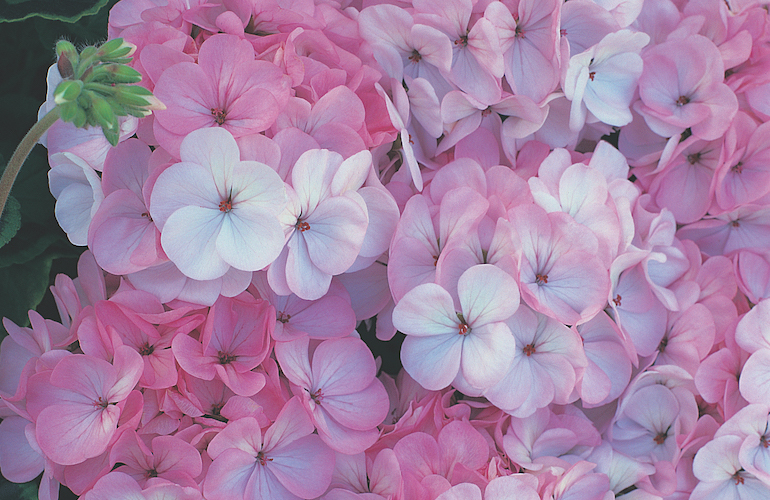
Feed your geraniums regularly to keep them covered in blooms
Image: Thompson & Morgan
Give your geranium plants adequate space to ensure good air circulation and healthy growth. There should be enough space between each plant so that the leaves are not touching. This roughly equates to four young plants per square foot of garden bed.
Geraniums need regular feeding whilst growing. Hungry geraniums will start to display stunted growth and yellow leaves. To avoid this, feed regularly with liquid fertiliser 3-4 weeks after transplanting and water your geraniums to keep them moist. Too little water will slow down growth and flowering.
Can you sow geranium seeds in Autumn?
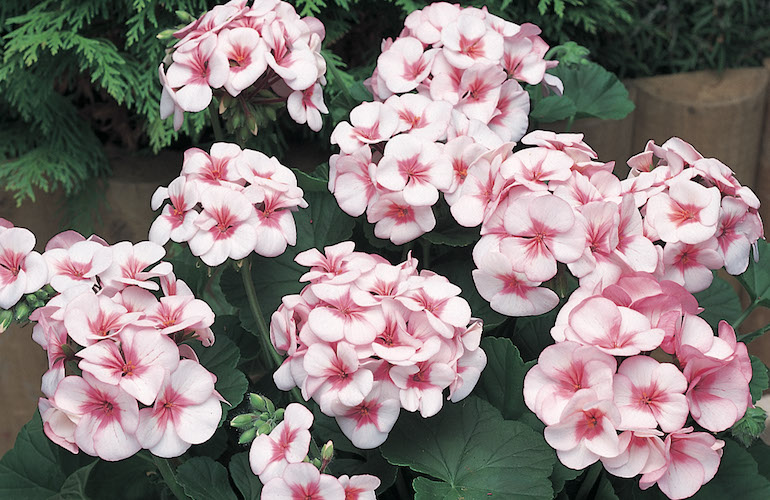
Grow Geranium 'Maverick Star' for stunning two toned blush coloured flower
Image: Thompson & Morgan
Recent research has revealed another successful approach to raising geraniums from seed. Now that heating and insulation equipment is more sophisticated, there is an argument for sowing seed in autumn and overwintering the young plants.
If you want to give this method a try, sow seed in October when ambient temperatures are still fairly high. Grow your young plants through the winter and spring, keeping them at around 45F (7C). Autumn sowing saves on fuel compared with January sowing, and produces earlier flowering and healthier plants.
Feed your geranium plants regularly and pay attention to disease control, especially on overwintered plants. Fumigation with a fungicide is preferable to spraying the leaves and stem. Spring-sown plants are best watered using a capillary system but autumn-sown plants should be watered by hand to avoid waterlogged compost in the winter months when growth is slow. If you are overwintering young geranium plants in a heated space, use the warmth to overwinter other tender perennials like fuchsias and begonias. This will make the most of your insulation and fuel.
We hope you’ve enjoyed our guide to sowing your own geranium seed. For even more information about growing and caring for geraniums, check out our hub page which guides you to some of the best online resources available. Share your own geraniums with us on our Facebook page or use the hashtag #YourTMGarden on Instagram.
Sign Up For Exclusive Special Offers




© 2024 Thompson & Morgan. All rights reserved. A division of Branded Garden Products Limited.
Sign up for exclusive offers!



